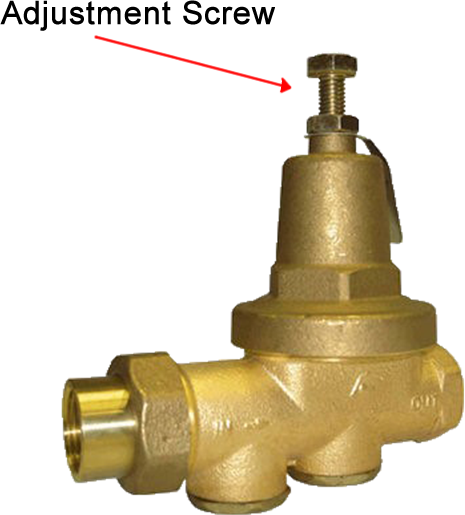Troubleshoot High/Low Water Pressure
HIGH WATER PRESSURE
Experiencing High Water Pressure?
Your problem should revolve around the Pressure Reducing Valve (PRV). The PRV is usually a bell-shaped device, and is most often found where the line enters the building (although it may possibly reside at other locations).
Pressure Reducing Valve (PRV)
While a plumber should have installed a PRV, there may be circumstances where the PRV never was installed. If this is the case, have a PRV installed and then adjust it if necessary.
Improperly Adjusted PRV
An improperly adjusted PRV will not reduce the system pressure to a desirable level. Usually the reduced pressure should be around 50 psi. If the PRV is set too high, use the adjustment screw on the PRV to reduce the downstream pressure. Warning: improper adjustment could result in water leaks or pipe failure.
Malfunctioning PRV
A malfunctioning PRV can possibly not restrict the pressure enough. If the adjustment screw on the PRV doesn’t seem to reduce the pressure, the PRV likely needs to be replaced.
LOW WATER PRESSURE
Experiencing a decrease in water pressure?
The issue will often be within your plumbing system. Below are some of the common things to look for when troubleshooting a low-pressure condition.
Pressure Reducing Valve (PRV)
If the low-pressure condition is present throughout the system, you should check your PRV. This is usually a bell-shaped device, and is most often found where the line enters the building (although it may possibly reside at other locations). If the PRV is improperly adjusted, or has failed, it can result in a pressure loss, or even no water, downstream.
Clogged Aerators
If the low pressure is isolated to a certain faucet, the problem may simply be a clogged or blocked aerator. Unscrew the end of the faucet, and check the aerator screen for rust, debris, scale or other particles that may be restricting flow. In some cases, it may be easier to simply clean or replace the aerator altogether.
Hot Water, Low Pressure
If the low pressure seems to only be affecting the hot water, there could be a problem with your water heater. Check the shut-off valve near the water heater, making sure it is fully open. You may need to consult a licensed plumber to evaluate the condition of your water heater and determine if it is affecting your water pressure.
Shut-Off Valve
Many homes and businesses have a master shut-off valve. The location can vary, but most of the time it will be located in a separate box behind the meter or near the PRV. This valve, which allows you to shut off the flow of water to the home, can restrict the flow if it’s not fully open. Even if slightly closed, this valve can restrict flows and decrease the water pressure.
Water Leak
A leak can affect your water pressure as well. To learn how to determine if you have a leak, see our page showing you how to check for water leaks.

